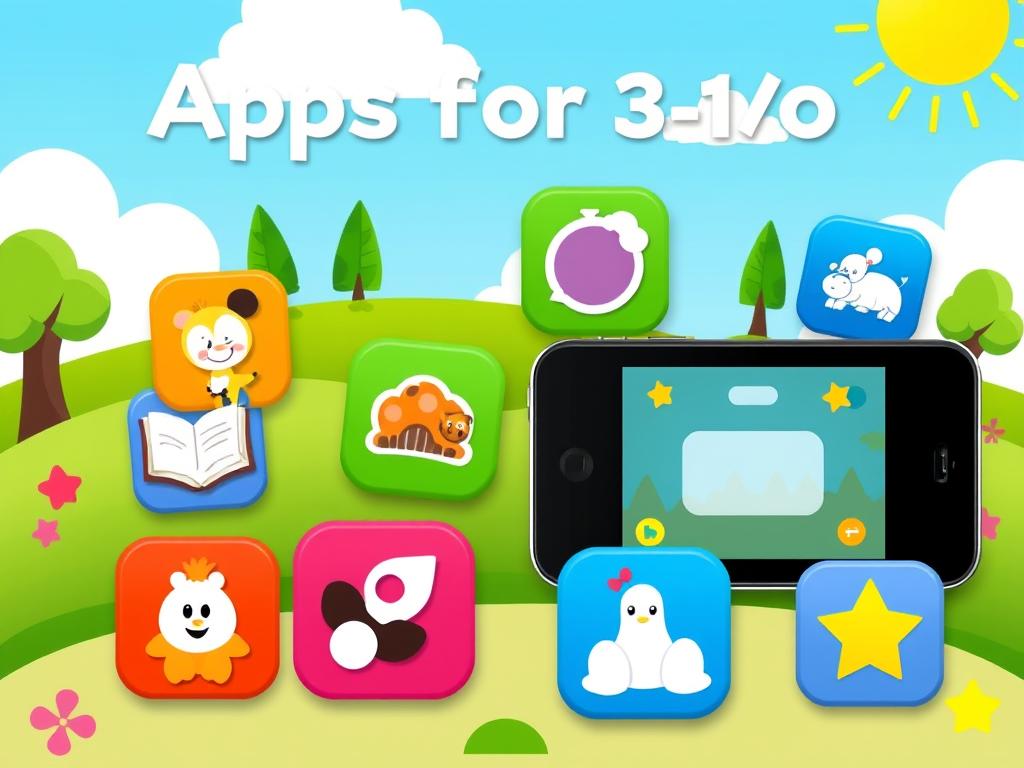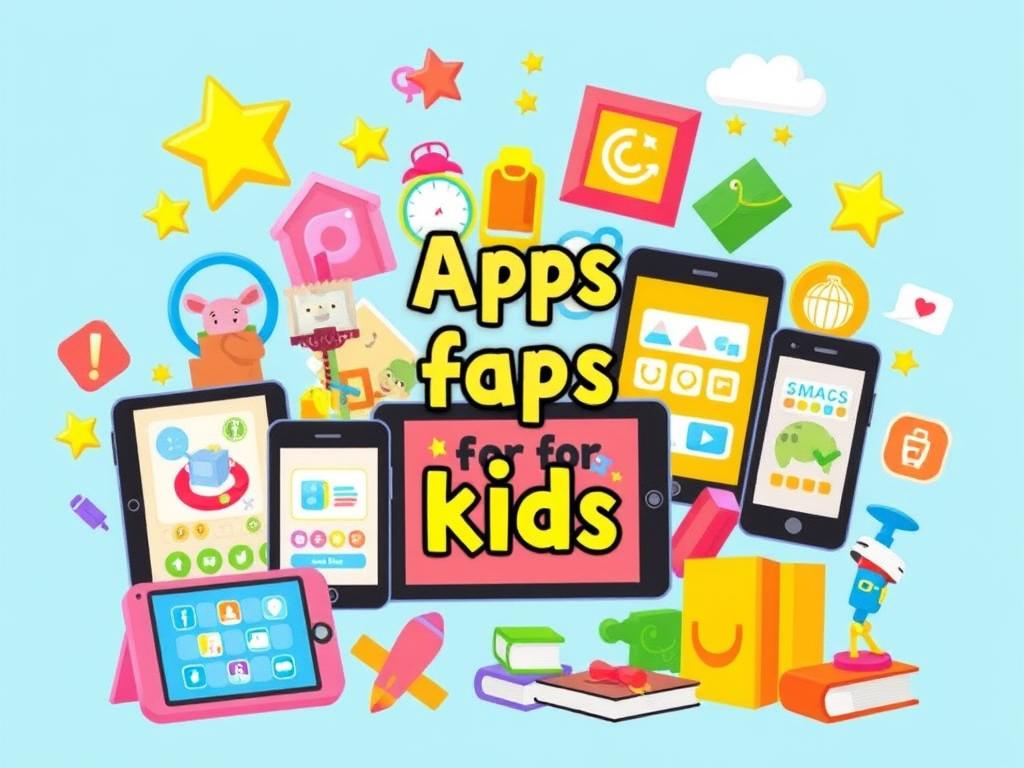Have you ever watched a child fully engrossed in a game, their excitement bubbling over as they connect the dots in a puzzle or dance along with animated characters? These moments not only spark joy but also open the door to powerful learning experiences. In today’s tech-driven world, parents are turning to innovative resources that blend fun with education, leading to the rise of The Best Educational Apps for Children. These children’s educational apps are designed to stimulate imagination and cater to a child’s natural curiosity, honing their literacy and numeracy skills from the age of two up to ten.
Imagine sitting down with your child, diving into an engaging app filled with vibrant graphics and interactive lessons. One such app, Khan Academy Kids, provides over 5000 lessons and educational games, making it a favorite for kids ages 2-8. With its extensive library and alignment with educational standards, it transforms screen time into meaningful learning experiences.
Just as family card games foster connections and build essential skills, these top educational apps for kids offer rich opportunities for growth and bonding. If you’re interested in learning about engaging games that can promote cognitive skills, you can check out this resource on fun card games for family gatherings here.
In this article, we will delve into the numerous benefits that these apps offer, explore top-rated options across different age groups, and discuss key features to look for when selecting educational tools. Join us as we uncover the vibrant world of educational apps that turn learning into an enjoyable adventure!
Key Takeaways
- Educational apps help children develop essential literacy and numeracy skills from a young age.
- Top educational apps cater to children of various age groups, ensuring learning is age-appropriate.
- Effective apps, like Khan Academy Kids, provide free and accessible learning experiences without ads.
- Parental involvement enhances the learning experience, making study time more engaging.
- Choosing apps with interactive content keeps kids motivated and interested in learning.
Why Choose Educational Apps for Kids?
Educational apps for kids represent a modern approach to learning that enhances engagement and retention. The concept of learning through play allows children to explore and discover while enjoying interactive experiences. Apps such as Khan Academy Kids and Lingokids utilize game-based elements, making educational content not only accessible but also enjoyable. They foster an environment where children are motivated to learn, thereby reinforcing the benefits of learning through play.
Benefits of Learning Through Play
Engagement is crucial in a child’s development, particularly in early childhood. When children participate in educational activities that feel like play, they are more likely to absorb information. Apps that incorporate interactive features can help bridge the gap between education and entertainment. They encourage curiosity and exploration, leading to enhanced learning experiences.
Enhancing Cognitive Skills
One of the most significant advantages of educational apps for kids is their ability to promote cognitive skills enhancement. Through interactive challenges and puzzles, children sharpen their problem-solving abilities, critical thinking, and creativity. Research supports that effective learning occurs when children actively engage with app content, as identified in studies published in the Journal of Children and Media. This active learning fosters lasting cognitive growth.
Parental Involvement
Parental involvement amplifies the effectiveness of educational apps. Parents can actively participate by facilitating discussions and assisting children with tasks, thereby creating a supportive learning environment. Encouraging independent exploration while guiding the child’s use of apps reinforces essential life skills. For additional insights on life skills essential for children, consider visiting this resource.
Top Rated Educational Apps for Different Ages
Finding the right educational apps for kids ages 3-10 can be a game-changer for their learning journey. Many apps cater specifically to toddlers and preschoolers while also offering valuable resources for elementary school children. Here’s a selection of some top educational apps for kids, geared towards their respective age groups.
Apps for Toddlers
For the youngest learners, educational apps for toddlers like Bedtime Math introduce essential math concepts through engaging stories and fun visuals. For overall educational development, Khan Academy Kids stands out, featuring a variety of activities that enhance reading and math skills. These apps combine entertaining content with learning, ensuring your child remains motivated.
Apps for Preschoolers
Preschool-age children can benefit greatly from educational apps for preschoolers such as DragonBox Numbers, which turns math into a fun adventure. Another excellent choice is ScratchJr, an app designed to introduce kids to basic programming concepts through interactive play. These applications not only foster creativity but also develop critical thinking skills essential for future learning.
Apps for Elementary School Kids
Elementary school students can expand their knowledge with apps like Lightbot: Code Hour, which teaches coding fundamentals in an engaging way. Another strong recommendation is Khan Academy, offering various courses across subjects like math and science. Many of these apps focus on specific age groups, incorporating interactive features to keep kids engaged and eager to learn.
For more details on the best learning tools available, check out this informative article on educational apps for your kids.

| App Name | Age Group | Rating | Installs |
|---|---|---|---|
| Bedtime Math | Toddlers | 4.5 | Over 5 million |
| Khan Academy Kids | Toddlers | 4.62 | Over 1 million |
| DragonBox Numbers | Preschoolers | 4.5 | Over 10 million |
| ScratchJr | Preschoolers | 4.3 | Over 5 million |
| Lightbot: Code Hour | Elementary School | 4.28 | Over 1 million |
| Khan Academy | Elementary School | 4.33 | Over 10 million |
Key Features to Look for in Educational Apps
Selecting the right educational app for children requires consideration of several essential key features in educational apps. These features ensure that learning remains both effective and enjoyable.
Engaging Content
Engaging content is crucial for maintaining a child’s interest. Quality educational apps, like Khan Academy Kids and Reading.com, offer captivating visuals, relatable narratives, and interactive activities. Such engaging content in learning apps allows children to explore new concepts while staying motivated through fun challenges.
User-Friendly Interface
A user-friendly interface enhances the learning experience, as children can navigate the app with ease. Apps should be designed intuitively, enabling young learners to interact without unnecessary frustration. An optimal interface is key for encouraging independent exploration of educational content.
Progress Tracking
Progress tracking in educational apps plays a significant role in monitoring a child’s development. Features such as detailed progress reports help parents and educators identify strengths and areas needing improvement. Tracking progress allows for tailored learning experiences that effectively enhance skill acquisition. For further insight on technology’s impact in education, check out this article on VR and AR in medicine.

Popular Categories of Educational Apps
There are various popular categories of educational apps that cater to different learning needs and interests of children. These categories not only facilitate fun learning experiences but also help children develop essential skills in various subjects. Among these, language learning apps and math and science educational apps stand out, providing engaging and interactive content designed for young learners.
Language Learning Apps
Language learning apps offer an engaging way for children to improve their vocabulary and language skills. For example, Duolingo, a well-known platform, supports over 30 languages through interactive lessons. Another option, Teach Your Monster to Read, employs synthetic phonics for teaching reading skills. With these tools, children can start building communication skills as early as possible.
Math and Science Apps
Math and science educational apps make complex concepts easier to understand through creativity and play. DragonBox Numbers focuses on fundamental arithmetic skills for kids aged 4-8. In addition, Khan Academy covers a vast array of subjects, including math and science, making it an excellent resource for students of all ages. These educational apps promote problem-solving and foster a love for learning in children.
Creative Arts and Music Apps
Creative arts and music apps nurture self-expression and spark artistic interests. Apps like Osmo Coding allow children to engage with tech while exploring coding concepts. Through apps like Mazaam: The Musical Genius, kids are introduced to the basics of music theory. Furthermore, platforms such as Writing Wizard guide children in practicing their penmanship and creative writing skills, offering a well-rounded approach to learning.

| Category | Examples | Ages | Features |
|---|---|---|---|
| Language Learning Apps | Duolingo, Teach Your Monster to Read | 3+ | Interactive lessons, phonics |
| Math and Science Educational Apps | DragonBox Numbers, Khan Academy | 4-12 | Problem-solving, various subjects |
| Creative Arts and Music Apps | Osmo Coding, Mazaam | 5+ | Art exploration, music theory |
Tips for Parents on Using Educational Apps
Integrating educational apps into children’s daily routines can be a rewarding yet challenging experience for parents. Effective screen time management for kids involves establishing healthy boundaries while maximizing the benefits of digital learning. Here are essential tips for parents using educational apps to create a balanced approach.
Setting Screen Time Limits
Establishing clear screen time limits is vital to ensure children do not spend excessive hours on devices. Research shows that infants and toddlers typically engage with touchscreen devices for just 10 to 45 minutes per day. By implementing time restrictions, parents can promote a mix of digital and offline activities, helping children develop diverse skills.
Encouraging Active Learning
Active learning strategies enhance the educational value of apps. Instead of allowing passive consumption of content, parents can encourage children to engage fully with the material. This might involve asking open-ended questions or discussing the lessons learned from an app. Parents can turn educational gameplay into memorable experiences that evoke critical thinking.
Joining in the Fun
Participating alongside children while they use educational apps fosters shared experiences that support learning. Parents can interact with their kids, affirming the bond while reinforcing the material being covered. This approach not only solidifies knowledge but creates an enjoyable atmosphere where learning thrives.
| Tip | Description | Benefits |
|---|---|---|
| Establishing Screen Time Limits | Set clear boundaries for daily app usage. | Prevents excessive use, encourages a balanced routine. |
| Encouraging Active Learning | Engage with content through discussions and questions. | Promotes critical thinking and deeper understanding. |
| Joining in the Fun | Participate in app activities with your child. | Strengthens relationships and reinforces learning. |
For more practical insights on managing daily routines and incorporating physical activity into busy schedules, check out this comprehensive guide.
Future Trends in Educational Apps for Children
As technology continues to evolve, future trends in educational apps are shaping the way children learn and engage with content. One major trend is the increasing implementation of gamification in learning, which enhances educational experiences by incorporating game mechanics and dynamic challenges. This approach not only boosts engagement but also fortifies knowledge retention, making learning both enjoyable and effective for children.
Gamification in Learning
The appeal of gamification is demonstrated by research showing that over 55% of students regularly participate in educational games. With advancements in app design, developers are creating increasingly interactive experiences that foster a playful approach to learning. This trend points towards a future where apps are designed not just to teach but to captivate young minds through enjoyable activities.
Personalized Learning Experiences
Another significant trend is the rise of personalized learning with AI technology. By utilizing adaptive technology, educational apps can customize lessons to align with a child’s unique learning pace and style. This tailored experience is particularly vital for children with specific learning needs; for instance, with 1 in 54 children diagnosed with autism spectrum disorder, personalized approaches ensure that all children can benefit from effective learning strategies.
The Role of Artificial Intelligence
Artificial intelligence is revolutionizing the landscape of educational apps by analyzing user interactions and suggesting tailored content modifications. This level of personalization ensures that each child receives appropriately challenging material, paving the way for a more engaging and adaptive learning environment. As educational technologies continue to grow, the integration of AI is set to make learning more accessible and enjoyable for all children.











